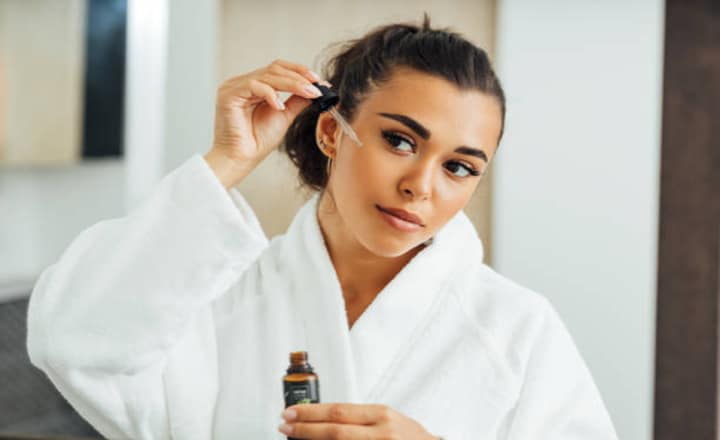Aging is an inevitable part of life, but the desire to maintain youthful, radiant skin remains a universal aspiration. As we age, our skin undergoes various changes, such as the loss of collagen, reduced elasticity, and the appearance of fine lines and wrinkles. In pursuit of ageless beauty, the beauty industry has introduced a variety of products, with one of the most popular being anti-aging serums. In this article, we will delve into the science behind these serums, exploring their ingredients, mechanisms of action, and how to choose the right one for your skincare routine.
Understanding the Aging Process
Before we dive into the world of the anti aging serum, it’s essential to understand the science of aging skin. As we age, several factors contribute to the visible signs of ageing:
Collagen and Elastin Depletion: Collagen and elastin are proteins that provide the skin with its structural support and elasticity. Over time, their production decreases, leading to sagging and wrinkles.
Free Radical Damage: Exposure to UV rays, pollution, and other environmental factors can generate free radicals in the skin. These unstable molecules can damage skin cells and accelerate aging.
Reduced Hydration: Aging skin tends to lose moisture, making it prone to dryness and fine lines.
Decreased Cell Turnover: The rate at which new skin cells are produced and old ones shed decreases with age, leading to a dull complexion.
Anti-Aging Serums: The Science Behind Youthful Skin
Anti-aging serums are designed to target the underlying causes of skin aging and mitigate their effects. They are formulated with a variety of active ingredients known for their ability to rejuvenate the skin. Let’s explore some of the key ingredients commonly found in these serums and their mechanisms of action:
Retinol (Vitamin A): Retinol is a powerhouse ingredient in the world of anti-aging. It enhances collagen production, promotes cell turnover, and helps to fade dark spots and fine lines. Retinol works by binding to retinoic acid receptors in the skin, stimulating cell renewal and collagen synthesis.
Hyaluronic Acid: This hydrating molecule can hold up to 1000 times its weight in water, making it a fantastic moisturizer. Hyaluronic acid plumps the skin, reducing the appearance of fine lines and wrinkles while improving overall hydration.
Vitamin C: As a potent antioxidant, vitamin C neutralizes free radicals, reducing oxidative stress on the skin. It also aids in collagen synthesis, brightening the complexion and promoting a more youthful appearance.
Peptides: Peptides are amino acid chains that signal the skin to produce more collagen. By boosting collagen levels, peptides help to improve skin firmness and reduce the appearance of wrinkles.
Niacinamide (Vitamin B3): Niacinamide helps to strengthen the skin’s barrier, reducing moisture loss and protecting against environmental damage. It can also improve the appearance of fine lines and uneven skin tone.
Alpha Hydroxy Acids (AHAs): AHAs, such as glycolic acid and lactic acid, exfoliate the skin’s surface, removing dead skin cells and encouraging the growth of fresh, radiant skin underneath.
Choosing the Right Anti-Aging Serum
With a plethora of anti-aging serums available on the market, selecting the one that suits your skin can be a daunting task. Here are some factors to consider when making your choice:
Skin Type: Consider your skin type, whether it’s dry, oily, combination, or sensitive. Different serums are formulated to address specific skin concerns.
Age: Your age can influence the type of serum you need. Younger individuals may focus on prevention and hydration, while those in their late 30s and beyond may require more potent ingredients.
Specific Concerns: Identify your primary skin concerns. Whether it’s wrinkles, fine lines, dark spots, or overall radiance, choose a serum that targets those issues.
Ingredient Sensitivity: Be aware of any allergies or sensitivities to particular ingredients, and opt for serums that are free from those substances.
Consistency: For the best results, consistency is key. Ensure that you can commit to a regular skincare routine with your chosen serum.

Application and Routine
Once you’ve selected the right anti-aging serum, it’s essential to use it correctly for optimal results. Here’s a step-by-step guide on how to incorporate an anti-aging serum into your skincare routine:
Cleansing: Start with a gentle cleanser to remove makeup, dirt, and impurities from your skin. A clean canvas allows the serum to penetrate effectively.
Toning: Apply a toner to balance your skin’s pH and prepare it to absorb the serum.
Serum Application: Apply a small amount of the anti-aging serum to your face and neck. Gently pat the serum into your skin, allowing it to be absorbed.
Moisturize: Follow up with a moisturizer to lock in the serum’s benefits and provide additional hydration.
Sunscreen: Finish your morning routine with a broad-spectrum sunscreen with an SPF of at least 30 to protect your skin from UV damage.
Night Routine: In the evening, follow the same steps, but you can skip the sunscreen and apply a night cream instead of a regular moisturizer for added hydration.
Conclusion
Anti-aging serums are a scientific marvel in the world of skincare. They offer the promise of youthful, radiant skin by addressing the underlying causes of aging. By understanding the science behind these serums and selecting the one best suited to your skin type and concerns, you can embark on a journey toward ageless beauty. Remember that consistency and patience are key to achieving the best results. With the right anti-aging serum and a proper skincare routine, you can embrace the aging process with grace and confidence, knowing that your skin is well-cared for and primed to shine with timeless beauty.

